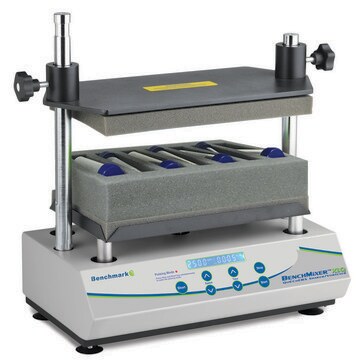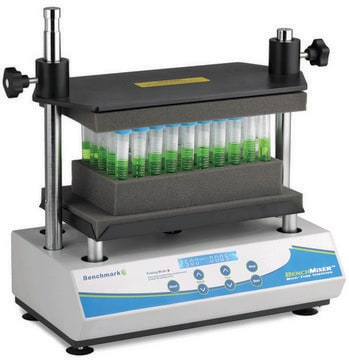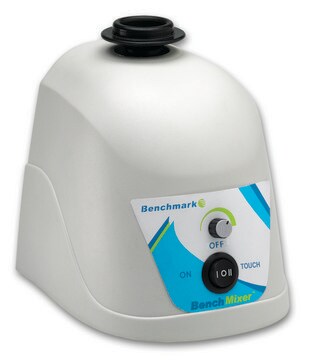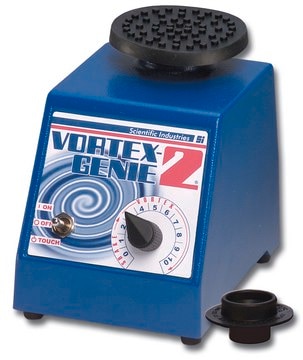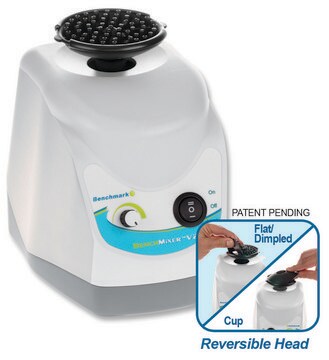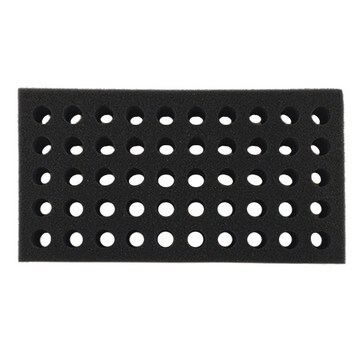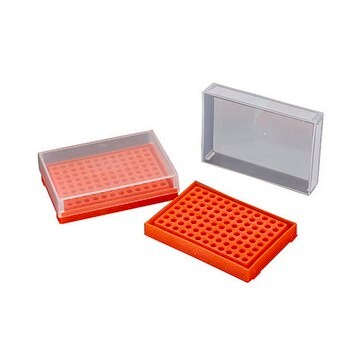Z742706
BenchMixer™ XLQ QuEChERs Shaker/Vortexer
AC/DC input 230 V AC, Schuko plug
Sinónimos:
dispersive solid phase extraction, vortex mixer, vortexer lab
About This Item
Productos recomendados
product line
BenchMixer™
feature
(3.6 mm orbit)
packaging
pack of 1 ea
manufacturer/tradename
Benchmark Scientific BV1010-TST-E
parameter
speed (500-2500 rpm)
technique(s)
QuEChERS: suitable
Overall L × W × H
15 in. (38.5 cm) × 9.2 in. (23.5 cm) × 16.5 in. (42 cm)
platform L × W
12 in. (30 cm) × 7 in. (17.8 cm)
¿Está buscando productos similares? Visita Guía de comparación de productos
General description
Multiple samples can be processed simultaneously in the Benchmixer XLQ′s large capacity racks, saving time and preventing operator fatigue. The vigorous, consistent shaking ensures all samples are exposed to identical conditions within the same batch of samples, as well as between batches.
The BenchMixer XLQ creates a true vortex in vertical sample racks by holding the top of the tube stationary while the bottom rotates in a 3.6mm orbit. Time and speed are precisley controlled by the digital microprocessor. A pulse mode allows for more vigorous mixing. Quiet operation, minimal vibration and a long service life are guaranteed by the precisely balanced drive system and powerful motor.
Using the BenchMixer XLQ is simple. To load the sample racks, loosen the knobs on the stationary steel rods and raise the top sample plate. One rod is shorter than the other, allowing the plate to be lifted up and swiveled to one side. After samples are loaded, lower the plate into place and tighten the knobs. Select the desired speed and run time on the digital control panel and press start. The BenchMixer XLQ can perform unattended mixing for as little as 1 minute or up to 100 hours.
While the BenchMixer XLQ is configured primarily for QuEChERS protocols, additional racks are available to accommodate nearly any type of vessel commonly found in the laboratory.
Legal Information
Related product
Certificados de análisis (COA)
Busque Certificados de análisis (COA) introduciendo el número de lote del producto. Los números de lote se encuentran en la etiqueta del producto después de las palabras «Lot» o «Batch»
¿Ya tiene este producto?
Encuentre la documentación para los productos que ha comprado recientemente en la Biblioteca de documentos.
Nuestro equipo de científicos tiene experiencia en todas las áreas de investigación: Ciencias de la vida, Ciencia de los materiales, Síntesis química, Cromatografía, Analítica y muchas otras.
Póngase en contacto con el Servicio técnico